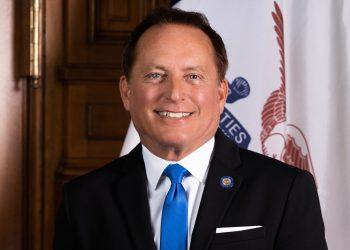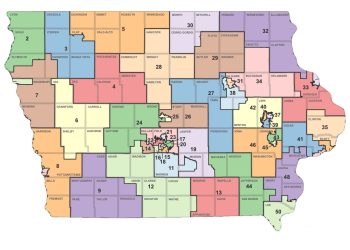On Monday, Judicial Watch, a conservative watchdog group based in Washington, D.C., released emails they received from the Iowa Secretary of State’s office in response to an open records request.
The open records request related to emails about Judicial Watch’s report released in February of 2020 claiming that eight Iowa counties have voter registration numbers larger than their eligible voter population.
They state that the emails prove that state officials, primarily Kevin Hall, the Iowa Secretary of State’s communications director, “coordinated” with Facebook to censor their social media posts about the reports.
One of the emails they quote is from Hall to Rachel Holland, a Facebook employee.
“We’ve been playing whack-a-mole with this false story all day. Is there anything you can do to help,” he wrote. “We’ve told them is fake. They have it PINNED to the top of their page.”
It is debatable whether it is appropriate for government agencies to request social media companies’ help. I’m personally not a fan of Facebook’s fact-checking program. There have been articles that have been labeled as false that, in my opinion, were not false but rather not in agreement with the liberal narrative.
We’ve seen this numerous times during the pandemic.
That said, Judicial Watch’s claim that their posts were successfully removed is false. Facebook fact-checking doesn’t remove posts, but it put a “filter over the post.” Most of us have likely seen a message from Facebook warning that the information is rated false. You can still see the post and still click through to the link.
It may be inconvenient, but it is not removal.
Additionally, Judicial Watch buries the lede, actually, they completely ignored it; their report last year about the eight counties in Iowa was false.
They reported several counties’ registration rates, comparing them with the county’s total population. They said Dallas County had a registration rate of 114.8 and a total population of 80,864. However, the latest American Community Survey Data released by the U.S. Census Bureau in 2019, the latest information we have, said Dallas County has a total population of 87,099 with a total voting citizen population of voting age of 57,795. In December of 2019, the Iowa Secretary of State reported 59,403 active voter registrations. That is a registration rate of 97.3 percent, not 114.8 percent.
Judicial Watch said Johnson County had a registration rate of 107.9 percent with a total population of 144,425. According to the U.S. Census Bureau, in 2019, their total population was 148,577 and had 107,829 voting-age citizens. In December of 2019, the Iowa Secretary of State’s office reported 96,038 active registered voters. That is a registration rate of 89 percent, not 107.9 percent.
They then claimed Lyon County had a registration rate of 102.5 percent with a total population of 11,745. Judicial Watch was closer with the total population; it is actually 11,776 with 8,311 citizens who are old enough to vote. According to the Iowa Secretary of State’s office in December of 2019, there were 8,085 active registered voters. That is a registration rate of 97.2 percent, not 102.5 percent.
I could go on because we’ll see the same thing with every county they mentioned.
Judicial Watch appears to have made a mistake by basing their registration rate on the total of active and inactive registered voters. However, even comparing voting age population with the total of active and inactive registered voters in Dallas County, for instance, is 105.7 percent, not 114.8 percent. That new calculation is 100.5 percent in Johnson County and 101.8 percent in Lyon County, still lower than what they reported.
Then, in the headline of their press release last year, said Iowa, statewide, has at least 18,658 extra names. That really has me scratching my head because, according to the U.S. Census Bureau, Iowa had, in 2019, 2,321,084 voting-age citizens, and the active and inactive voter registration numbers were 2,157,877, 92.9 percent. So, in reality, at the end of 2019, Iowa had 163,207 more eligible voters than we had names on the list.
So I don’t have any idea what numbers they were looking at. They were either not looking at the right data or were not comparing apples to apples (for instance, you don’t compare 2019 demographical data with 2020 voter registration data). I would like to give them the benefit of the doubt and say they make a mistake instead of accusing them of blatantly lying.
In Iowa, it’s the active voter registration roles that are most important. Before the 2020 election and 2021 Iowa Legislative session, inactive registered voters have not voted in two consecutive general elections, have not sent in a change-of-address form, and did not register. The inactive registered voter list is the first step to having one’s voter registration canceled. A new law passed in 2021 reduces that to one resulting in the Iowa Secretary of State moving 294,000 voters to the inactive rolls since they did not vote in the 2020 general election. I should add that in addition to this, we have a voter ID requirement.
Judicial Watch was corrected with hard numbers, and they still pushed their false story. People have a right to their opinion, but they don’t have a right to their own set of facts. I would have more sympathy for Judicial Watch had their report been accurate, but it wasn’t.














